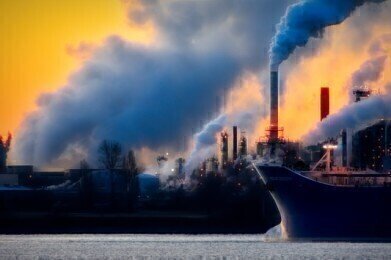Gas Detection
How Does the UK's Carbon Capture Project Work?
Apr 13 2019
The UN’s recent report urges ‘unprecedented’ action to stop the world’s temperature rising by a 1.5C increase. A big part of that is reducing emissions of greenhouse gases like carbon dioxide, which cause heat to become trapped in the earth’s atmosphere. It seems a power station in North Yorkshire may have found the solution.
Drax power station has become the first of its kind throughout Europe to capture carbon dioxide (CO2) from wood-burning. Can this carbon capture project reverse the effects of climate change? Or do the controversies outweigh the benefits? Keep reading to find out how it all works…
How does it work?
Carbon capture and storage (CSS) is the process of capturing up to 90% of the CO2 emissions produced from fossil fuels in industrial processes.
To do so, CSS technologies first capture the CO2, then transport it before finally securing the emissions underground.
This technology typically uses a chemical in the amine group which absorbs the CO2. Another process then separates the CO2 from the amine, which can then be reused.
Can CSS reverse climate change?
In order to combat rising temperatures and avoid the impact of climate change, drastic action needs to be taken to cut down greenhouse gas emissions. Is CSS the solution we’ve been looking for?
While it can reduce CO2 emissions by capturing them before they’re released into the atmosphere, the energy needed to capture and store carbon has caused controversy. The method isn’t thought to be particularly cost-effective by critics, especially if it were to be marketed on a larger scale.
The impact of storing the emissions underground is also seen as controversial, with Almuth Ernsting from the pressure group Biofuelwatch, saying "forests are vital for the health of the climate so we need to keep them not burn them.”
With a lot of space needed, the project could affect the viability of the land and the animals and plants habituating on it, and therefore the ability to generate more power from the land.
What else can we do to help CO2 removal?
Carbon capture isn’t the only way to offset emissions. Reforestation can help, with forests globally absorbing 30% of our emissions. Restoring nature and growing more crops for human consumption is a great way to create negative emissions.
CO2 has even been found to enhance plant growth for some crops, with an optimal level of around 800ppm, as explored in the article ‘Carbon dioxide dosing in commercial greenhouses – gas sensors for optimal control of growth conditions and safety’.
Digital Edition
IET 34.2 March 2024
April 2024
Gas Detection - Biogas batch fermentation system for laboratory use with automatic gas analysis in real time Water/Wastewater - Upcycling sensors for sustainable nature management - Prist...
View all digital editions
Events
Apr 22 2024 Hannover, Germany
Apr 22 2024 Marrakech, Morroco
Apr 23 2024 Kuala Lumpur, Malaysia
Apr 23 2024 Kintex, South Korea
Apr 23 2024 Edmonton, AB, Canada


















